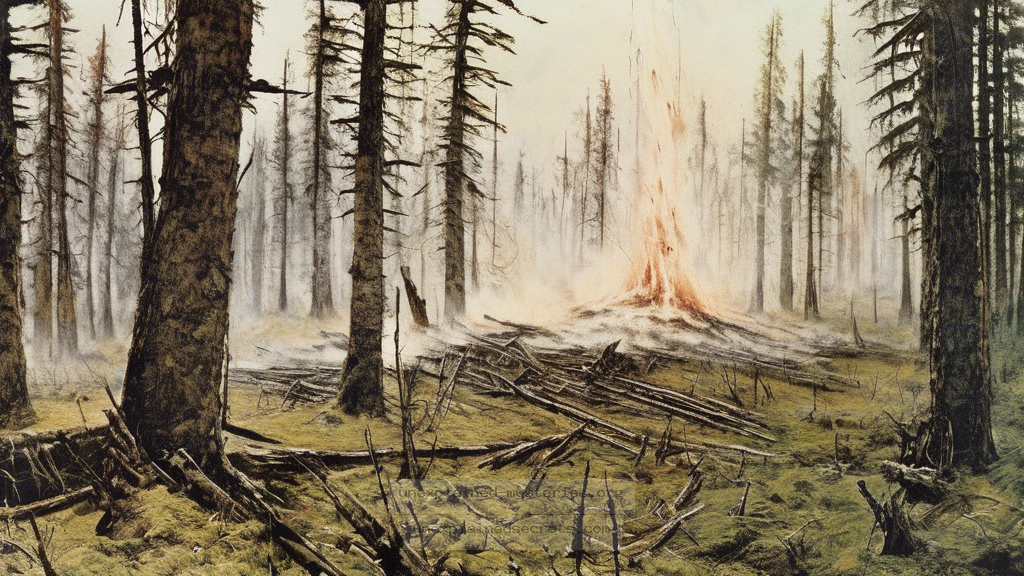What Are the Secrets Behind the Tunguska Event, and Why Does It Remain an Enigma Over a Century Later?
What Are the Secrets Behind the Tunguska Event, and Why Does It Remain an Enigma Over a Century Later?
The Tunguska Event of 1908 is one of the most compelling scientific anomalies in history, captivating the imaginations of scientists, researchers, and mystery enthusiasts alike. On June 30, 1908, a massive explosion occurred in the remote Siberian region of Tunguska, leveling over 2,000 square kilometers of forest. The cause of this explosion has puzzled experts for over a century, leading to numerous theories ranging from meteorite impacts to nuclear explosions. Understanding the Tunguska Event is crucial not only for historical analysis but also for assessing potential threats from space. This post delves into the mystery, historical context, scientific theories, and ongoing research surrounding the Tunguska Event.
Historical Context: The Day the Sky Exploded
The Tunguska Event’s historical significance cannot be overstated. On that fateful morning, locals reported seeing a fireball in the sky, followed by a massive explosion that shook the ground. Eyewitness accounts described a flash that lit up the sky, followed by a shockwave that knocked people off their feet and caused windows to shatter hundreds of kilometers away. The event went largely unnoticed by the rest of the world until Russian scientist Leonid Kulik led an expedition to the site in 1927, nearly two decades later.
During his investigation, Kulik discovered a vast area of flattened trees and scorched earth, but no impact crater, which contradicted the prevailing theory of a meteorite impact. This revelation ignited a scientific quest to unravel the mystery of the Tunguska Event, leading to many hypotheses and theories over the decades.
Core Concepts: What Happened That Day?
At the heart of the Tunguska mystery lies the question: what caused the massive explosion? Several scientific theories have emerged, each with its own merits and flaws. The two most prominent hypotheses are:
- Meteor Airburst: The most widely accepted explanation is that a small comet or asteroid entered the Earth’s atmosphere and exploded in an airburst approximately 5 to 10 kilometers above the ground. This explosion would have released energy equivalent to 10-15 megatons of TNT, sufficient to cause the observed destruction.
- Nuclear Explosion: Some fringe theories propose that the explosion was the result of an extraterrestrial spacecraft or a secret Soviet nuclear test. However, these theories lack substantial evidence and are not taken seriously by the scientific community.
Practical Implications: Why Does It Matter?
The Tunguska Event serves as a critical case study for understanding asteroid and comet impacts on Earth. With the increase in technology and data collection, scientists now have better methods for tracking near-Earth objects (NEOs). The implications of the Tunguska Event extend beyond historical curiosity; they inform current planetary defense strategies. The event illustrates the potential devastation that could occur if a larger object were to strike a populated area.
Furthermore, continued research into such phenomena can help us develop early warning systems and mitigation strategies to prevent potential disasters. Understanding the Tunguska Event also prompts discussions about the ethical considerations of planetary defense, particularly regarding the potential for deflection missions targeting hazardous asteroids.
Alternative Perspectives: Theories and Criticisms
While the meteor airburst theory remains the most accepted explanation, alternative perspectives continue to emerge. Some researchers have suggested that the event could have been caused by a combination of factors, such as an underground gas explosion or the ignition of a large methane pocket. However, these theories often lack the empirical support that bolsters the meteor hypothesis.
Critics of the meteor airburst theory argue that the absence of an impact crater raises questions. They point to the lack of physical evidence, such as meteorite fragments or distinct geological features at the site. Nevertheless, ongoing studies using advanced technology, such as satellite imagery and geophysical surveys, have provided new insights that support the airburst theory.
Common Misconceptions: Unraveling the Myths
The Tunguska Event is rife with misconceptions, often fueled by sensationalized media portrayals and conspiracy theories. One common myth suggests that the explosion was a result of a UFO crash or an experiment gone wrong. While the event’s remote setting and dramatic explosion lend themselves to such narratives, there is no credible evidence to support these claims.
Another misconception is that the event was completely ignored by the global scientific community for decades. In reality, while it did not receive widespread attention initially, it was a topic of interest among Russian scientists, culminating in Kulik’s expedition in the late 1920s.
Best Practices for Investigation: How to Study Such Anomalies
Investigating phenomena like the Tunguska Event requires a multidisciplinary approach that combines geology, astronomy, and environmental science. Here are some best practices for researchers:
- Field Studies: Conduct detailed field surveys of the event site to gather geological and ecological data.
- Remote Sensing: Utilize satellite technology to analyze land changes over time and assess the impact of the explosion on the environment.
- Collaboration: Work with international teams to pool resources and knowledge, ensuring a comprehensive analysis of the event.
Future Developments: Ongoing Research and Discoveries
Research into the Tunguska Event is far from over. Advances in technology have allowed scientists to revisit the site with modern tools that were unavailable during Kulik’s time. For example, the use of LiDAR (Light Detection and Ranging) technology has helped researchers identify subtle ground disturbances that may have gone unnoticed in earlier investigations.
Furthermore, studies of ice cores and sediment layers have provided insights into past cosmic events, including potential impacts and airbursts. These investigations help scientists create models that predict the likelihood of future events, allowing for better preparedness and response strategies.
Conclusion: The Enduring Mystery of Tunguska
The Tunguska Event remains one of the most intriguing scientific anomalies in history. Its blend of mystery, scientific inquiry, and the potential for real-world implications continues to capture the interest of researchers and enthusiasts alike. From understanding the risks posed by near-Earth objects to unraveling the complexities of cosmic events, the Tunguska Event serves as a reminder of the universe’s unpredictability. As we evolve our understanding of such phenomena, we take essential steps towards safeguarding our planet from future cosmic threats.
Other Articles
Recent Posts
- What Happened to Flight MH370? The Conspiracy Theories That Still Haunt Us
- What Secrets Lurk Within the Walls of the Infamous Trans-Allegheny Lunatic Asylum?
- What Evidence Supports the Existence of Bigfoot in the Pacific Northwest?
- What Happened to the Indus Valley Civilization? Unraveling the Mysteries of Ancient Urban Life
- Can Telepathy Be Scientifically Proven Through Laboratory Evidence?







